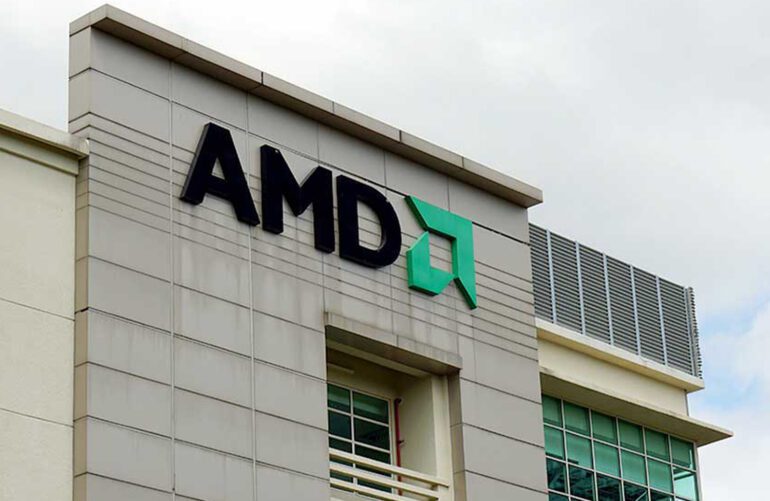TL;DR:
- Advanced Micro Devices (AMD) and Microsoft are partnering to develop AI processors as an alternative to Nvidia’s GPUs.
- Microsoft is providing financial support to bolster AMD’s AI efforts.
- The collaboration includes the development of a homegrown Microsoft processor called Athena for AI workloads.
- AMD stock surged more than 6% on the news, while Nvidia stock dipped 0.9% and Microsoft stock advanced 0.3%.
- AMD’s stock rebounded after a decline caused by mixed first-quarter earnings and a weak sales forecast for the second quarter.
- AMD is still trading below its 50-day moving average line, indicating a negative trend.
- The partnership between Microsoft and AMD demonstrates their commitment to challenging Nvidia’s dominance in the AI market.
- The weakened demand for PCs and a softening data center market poses challenges for Advanced Micro Devices.
Main AI News:
Advanced Micro Devices (AMD) experienced a surge in its shares on Thursday following a report indicating that the software giant Microsoft is collaborating with the chipmaker to develop artificial intelligence (AI) processors. This development propelled AMD’s stock to climb more than 6% throughout the day, reflecting the positive reception from investors.
According to Bloomberg, Microsoft and AMD have joined forces to create an alternative to Nvidia’s dominant graphics processing units (GPUs) in the AI market. This collaboration aims to challenge Nvidia’s stronghold by leveraging AMD’s expertise in processor technology and Microsoft’s significant financial support. Additionally, Microsoft is actively collaborating with AMD on a proprietary Microsoft processor, codenamed Athena, specifically designed to handle AI workloads.
On the stock market, AMD’s shares exhibited a notable 6.1% increase, closing at 86.61. In contrast, Nvidia’s stock experienced a slight decline of 0.9%, settling at 275.62. Meanwhile, Microsoft’s stock showed a modest rise of 0.3%, concluding the trading day at 305.41.
AMD’s stock recovery on Thursday effectively recuperated a substantial portion of the losses it incurred on Wednesday due to its mixed first-quarter earnings report. Nevertheless, it is worth noting that AMD’s stock continues to trade below its 50-day moving average line, which is regarded as a negative indicator in the market.
The decline in AMD’s stock on Wednesday amounted to a significant drop of 9.2%, concluding at 81.62. This decline was primarily attributed to the company’s sales forecast for the second quarter, which fell short of expectations despite surpassing projections for the first quarter. The weakened demand for personal computers and a softer data center market have posed challenges for Advanced Micro Devices.
Despite these hurdles, the collaboration between Microsoft and AMD in the AI sector holds promising prospects for both companies. By leveraging their combined strengths and resources, they aim to establish a formidable presence in the AI market, potentially disrupting Nvidia’s current dominance. This partnership not only demonstrates Microsoft’s commitment to bolstering AMD’s AI initiatives but also signifies the strategic alignment between these two tech powerhouses in pursuing innovative solutions.
Conlcusion:
the partnership between Advanced Micro Devices (AMD) and Microsoft to develop alternative AI processors signifies a significant development in the market. This collaboration poses a potential challenge to Nvidia’s current dominance in the graphics processing unit (GPU) sector, specifically within the AI market. With Microsoft’s financial support and technological expertise, combined with AMD’s processor technology, these two industry leaders aim to establish a formidable presence and disrupt the current market dynamics.
This collaboration highlights the intense competition and innovation within the AI market as companies strive to meet the growing demand for advanced processing capabilities. As the market evolves, stakeholders should closely monitor the progress and strategic implications of this partnership, as it has the potential to reshape the landscape and create new opportunities for market players.

